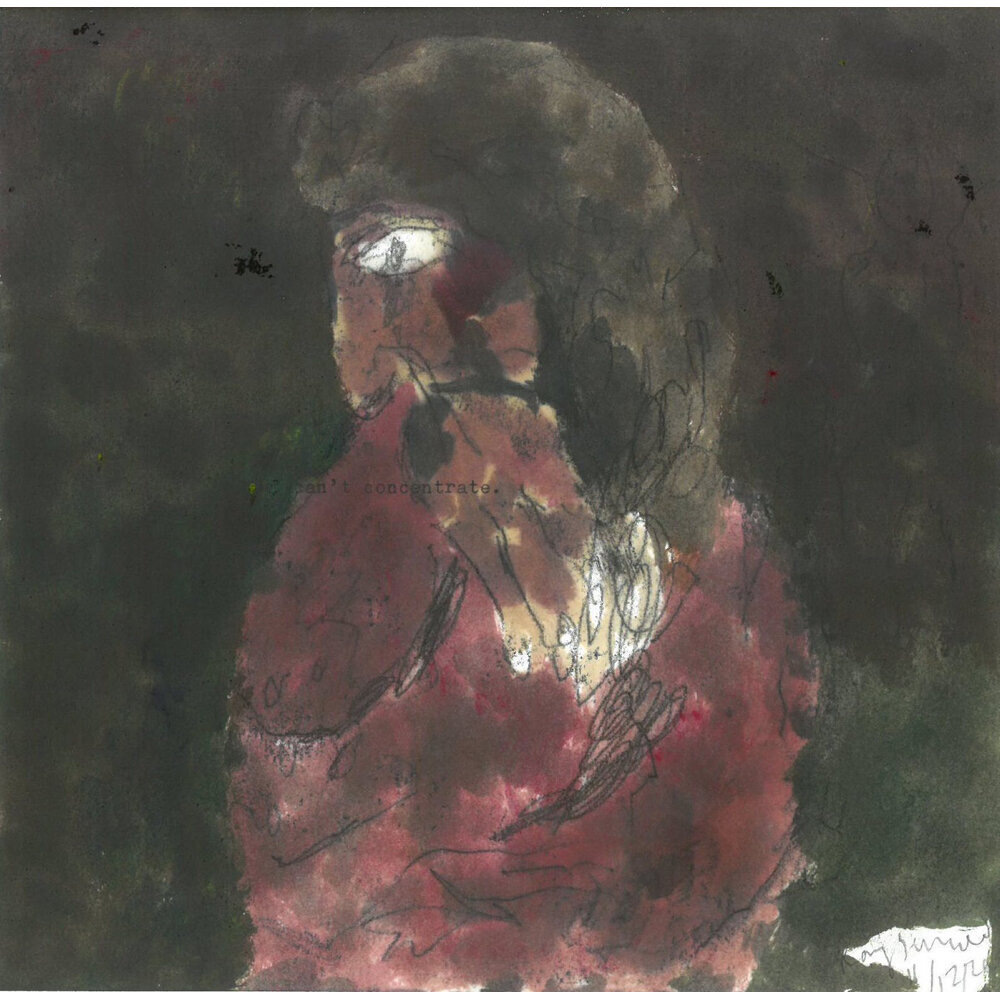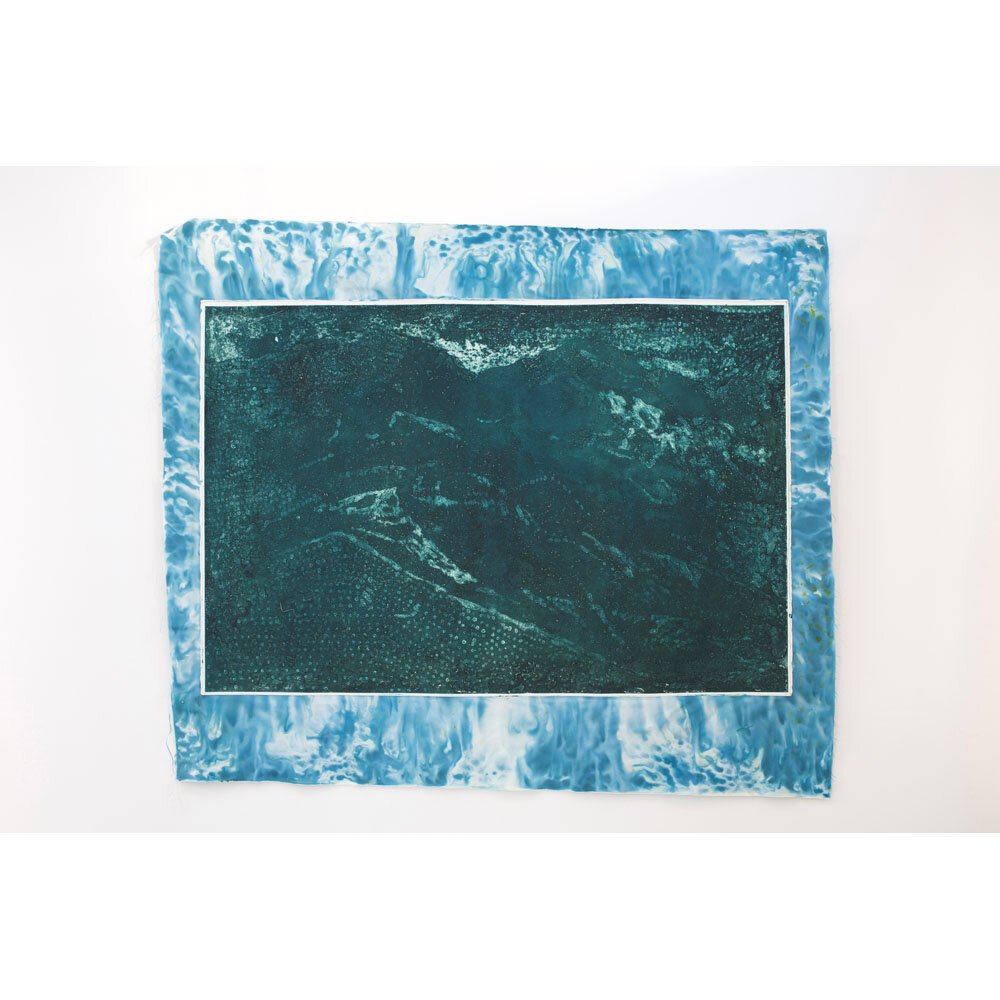Florence Poirier-Nkpa
£0.00
Florence Poirier-Nkpa has been living and working in Saint-Martin in the Caribbean since 2006.
Her work does not deal specifically with her origins, decolonisation, gender or environmental issues, because when she appropriates a drawing, a painting, a photograph of a performance or a film replica, the work of another becomes the starting point for an engaged discourse. From all eras and styles, she can choose Ernest Pignon Ernest's Pulcinella (1993) to tell the Chronicle of a sentence announced by a world she considers hermaphroditic, to the point of reproducing itself identically and infinitely; just as she can ironically criticise the Ghanaian Adinkra symbol Sankofa by asking him where the treasure of our future has gone? This is done by revisiting Antonius Eisenhoit's engraving Haeresis Dea (1589) and Serigne Ibrahima Dieye's painting Les plumes de la fortune.
Through the use of drawing and linocuts in black and white, she is constantly looking for pretexts for narration with words that clash, to underline what makes our lives complex and contrasted.
These quotations from works are rarely engraved in a literal way, but more often with allusions, comments, criticisms, remarks. Printmaking is an inescapable medium for her, who believes she is writing "Chronicles". She likes to think that she spreads anecdotes, ideas, important, diverse or significant facts in the form of printed sheets so that they are remembered or forgotten.
The project entitled Ensemble(s) rémanent for which she is designing installations aims to increase the link between what the print shows and the meaning that emerges from it. This work puts the process of creation itself in abeyance, by presenting reference works and linocuts, which are then associated with a combination of objects, sounds and texts.
Quantity:
Florence Poirier-Nkpa has been living and working in Saint-Martin in the Caribbean since 2006.
Her work does not deal specifically with her origins, decolonisation, gender or environmental issues, because when she appropriates a drawing, a painting, a photograph of a performance or a film replica, the work of another becomes the starting point for an engaged discourse. From all eras and styles, she can choose Ernest Pignon Ernest's Pulcinella (1993) to tell the Chronicle of a sentence announced by a world she considers hermaphroditic, to the point of reproducing itself identically and infinitely; just as she can ironically criticise the Ghanaian Adinkra symbol Sankofa by asking him where the treasure of our future has gone? This is done by revisiting Antonius Eisenhoit's engraving Haeresis Dea (1589) and Serigne Ibrahima Dieye's painting Les plumes de la fortune.
Through the use of drawing and linocuts in black and white, she is constantly looking for pretexts for narration with words that clash, to underline what makes our lives complex and contrasted.
These quotations from works are rarely engraved in a literal way, but more often with allusions, comments, criticisms, remarks. Printmaking is an inescapable medium for her, who believes she is writing "Chronicles". She likes to think that she spreads anecdotes, ideas, important, diverse or significant facts in the form of printed sheets so that they are remembered or forgotten.
The project entitled Ensemble(s) rémanent for which she is designing installations aims to increase the link between what the print shows and the meaning that emerges from it. This work puts the process of creation itself in abeyance, by presenting reference works and linocuts, which are then associated with a combination of objects, sounds and texts.
Florence Poirier-Nkpa has been living and working in Saint-Martin in the Caribbean since 2006.
Her work does not deal specifically with her origins, decolonisation, gender or environmental issues, because when she appropriates a drawing, a painting, a photograph of a performance or a film replica, the work of another becomes the starting point for an engaged discourse. From all eras and styles, she can choose Ernest Pignon Ernest's Pulcinella (1993) to tell the Chronicle of a sentence announced by a world she considers hermaphroditic, to the point of reproducing itself identically and infinitely; just as she can ironically criticise the Ghanaian Adinkra symbol Sankofa by asking him where the treasure of our future has gone? This is done by revisiting Antonius Eisenhoit's engraving Haeresis Dea (1589) and Serigne Ibrahima Dieye's painting Les plumes de la fortune.
Through the use of drawing and linocuts in black and white, she is constantly looking for pretexts for narration with words that clash, to underline what makes our lives complex and contrasted.
These quotations from works are rarely engraved in a literal way, but more often with allusions, comments, criticisms, remarks. Printmaking is an inescapable medium for her, who believes she is writing "Chronicles". She likes to think that she spreads anecdotes, ideas, important, diverse or significant facts in the form of printed sheets so that they are remembered or forgotten.
The project entitled Ensemble(s) rémanent for which she is designing installations aims to increase the link between what the print shows and the meaning that emerges from it. This work puts the process of creation itself in abeyance, by presenting reference works and linocuts, which are then associated with a combination of objects, sounds and texts.






